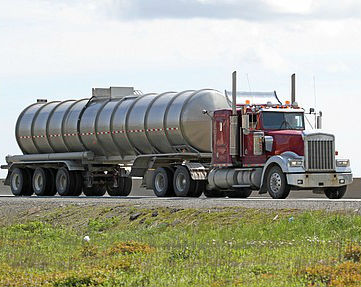January 2016, Vol. 243, No. 1
Features
Oil Stranded by California Pipeline Break Could Be Trucked Out

LOS ANGELES (AP) — Eight months ago a ruptured pipeline created the largest coastal oil spill in California in 25 years, fouling beaches near Santa Barbara with crude and spreading goo as far as 100 miles away.
The beaches reopened last summer, but the fallout is continuing.
Santa Barbara County planners are expected to decide in about a week whether to grant Exxon Mobil Corp.’s latest request to use trucks to move more than 17 million gallons of oil stranded in storage after the pipeline shut down in May after the break.
With the pipeline shut down indefinitely, the county last year rejected the company’s emergency application to truck the oil to refineries. In a second proposal filed this month, the company says it’s been determined the pipeline will be shut down for months, if not years, creating an “unusual risk” for the remaining oil.
“The lack of a pipeline to quickly empty the … crude storage tanks during a natural disaster or unforeseen circumstance could potentially result in the loss or damage to property, the environment or essential public services,” the company warns.
If approved, the company would run up to 30 truck trips a day for as long as six months to move the remaining crude.
The plan has run into opposition from environmentalists who warn that transporting the marooned oil would be more dangerous than leaving it where it is.
“Trucking millions of gallons of crude oil down winding coastal highways would put Santa Barbara at risk of another disaster,” said Kristen Monsell, an attorney with the Center for Biological Diversity.
“Exxon’s request is yet another example of why dirty oil transportation and development doesn’t belong in California’s fragile coastal environment,” she added.
On May 19, a 6-inch breach along a corroded section of pipeline west of Santa Barbara, owned by Texas-based Plains All American Pipeline, caused thousands of gallons of oil to spill onto the beach while creating an ocean slick that spread for miles along the coast.
The company has been criticized for taking about 90 minutes to alert federal responders after confirming the spill from the pipeline. The spill is also being investigated by prosecutors for possible violations of law.
The cause of the break has not been determined by federal investigators, but preliminary information suggests that corrosion was the culprit.
The cleanup is completed, although monitoring of the spill area and investigations continue. State and federal officials are in the early stages of a comprehensive study of damage, which includes assessing harm to seabirds, fish and the habitat.
The spill was initially believed to be up to 101,000 gallons, but later calculations tentatively pegged the maximum amount at 126,000 gallons, according to company filings with federal regulators.
The company has estimated total costs from the break at $257 million, which would include the cleanup bill, any third-party claim settlements, estimates for fines and legal fees and other costs. The company has said that bill will be offset by an estimated $192 million in insurance.
Exxon Mobil spokesman Todd Spitler said the company has provided the county with an extensive safety plan and similar trucking operations have been conducted by other operators in Santa Barbara County.
“Until an alternate transportation option is available, we do not have any method of shipping crude oil” from the site, he said in an email.
Written by Michael R. Blood, Associated Press





Comments